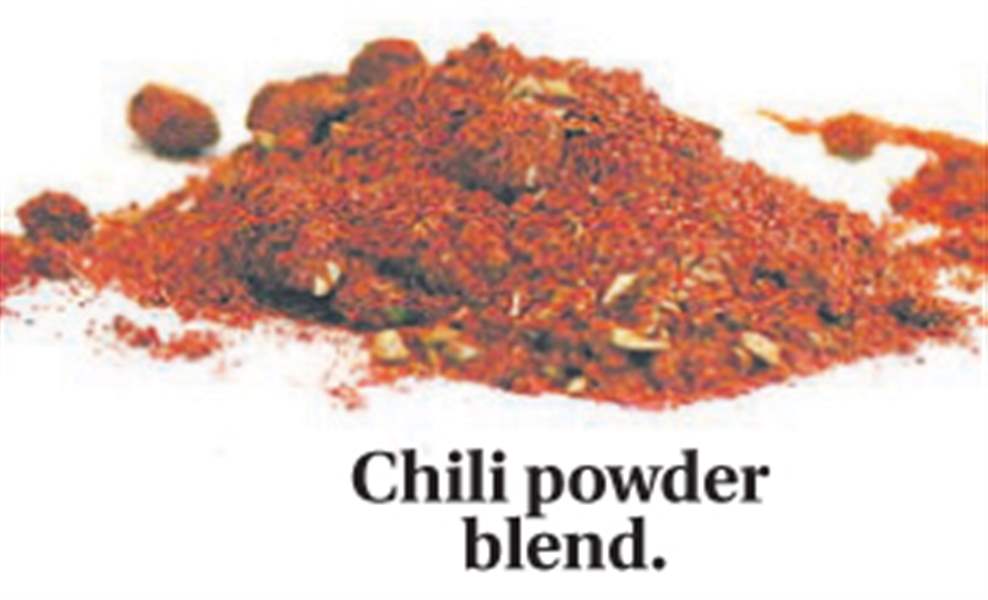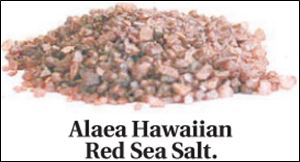
Spices add flavor to Valentine s Day
2/6/2007

Heart-shaped cheese covered with French Pepper Rose Peppercorns with Alaea Hawaiian Red Sea Salt on the sides and surround by paprika.
There are more ways to add red to Valentine s Day than hearts and flowers, jewelry and candy.
For a romantic meal, use a red spice to add a flavor kick and a rouge color to dishes. Some red spices are very familiar. Others are novelties or are not among mainstream kitchen staples.
Not only will you be amazed at the variety of spices that are brilliant red, you ll be surprised at the varied dishes that use the spices. There s something for just about every taste.
For the best color, start with a fresh jar of spice.

Cayenne pepper is called the standard for all spicy dishes by the Spice Hunter company. Sit a jar of sweet paprika next to a jar of cayenne and you can see just how orange-red the powder is compared to the deep red paprika.
Recipes such as Spicy Garlic Shrimp don t need much ground cayenne or red pepper to bring flavor. A quarter teaspoon is all that is needed for the recipe from Tom Fitzmorris New Orleans Food (Stewart, Tabori, and Chang, $19.95). The shrimp can be served with rice, but the cookbook author suggests pairing it with jalapeno-cheese corn bread; we used the corn bread as an open-face sandwich when the recipe was tested.
Ground cayenne, which is said to be a blend of chili powders, is also used in dips, soups, salads, sauces, and other entrees such as Texas-style brisket or Creole Jambalaya.

Chili powder is the name given to any variety or collection of chilies, which are orange to red in color and come from mild, medium, and hot varieties. According to The Spice and Herb Bible, Second Edition by Ian Kemphill (Robert Rose, $24.95), it has heat levels of 3, 7, and 9 on a scale of 1 to 10. (Cayenne pepper is given a heat level of 8.)
Fast and easy to prepare, LBJ Pedernales River Chili from American Regional Cuisine Second Edition by The Art Institutes (Wiley, $45) is made with 1 tablespoon chili powder, beef chuck, onions, and other spices. As is the Texas tradition, the chili is made without beans. This chili can be served with corn bread, rice, or tortillas. Or use it to make enchiladas.

Sweet paprika adds color and flavor to savory dishes. It has to be a favorite spice locally with the popularity of Chicken Paprikas, the Hungarian dish. The flavor can range from mild to pungent and hot, and the color from bright orange-red to deep blood-red.
Commercial paprika comes from Spain, South America, California, and Hungary. Many cooks use the Hungarian paprika, which is milder.
Paprika comes from the same family as chili but the vivid color is determined by the amount of red pigment present and the lack of capsaicin (the heat element in chilies), according to The Spice and Herb Bible.
Ground sumac is from the edible sumac tree, which is a member of the same family as the mango. This red spice is commonly used in Middle Eastern dishes when rubbed into meats for grilling or combined with potatoes, beets, and bean salads. It is also used in Greek dishes and is described as an almost citruslike flavor and magenta color.
Claudia Roden uses sumac in Arabesque: A Taste of Morocco, Turkey & Lebaon (Knopf, $35) in Bread Salad (Fattoush), Chicken Pie with Onions and Sumac, and Grilled Poussins with Sumac (small chickens).
Salt and pepper
Beyond these traditional spices, there s a world of novelty spices. Two that I bought locally bring new dimensions to the idea of salt and pepper.
First the pepper. I had heard about pink peppercorns via the Spice Hunter. The company says pink peppercorns make a colorful garnish. Grind coarsely and press into rounds of brie or chevre cheese. Combine with poached pears to make a pear chutney a flavorful accompaniment to poultry, fish, or duck.

Instead of pink peppercorns, I found and bought French Pepper Rose Peppercorns (Wm. Bounds) at Kitchen Tools & Skills in Perrysburg. It is described as a delicate fruity, spicy flavor for sauces, salads, and seafood entrees. I adapted the idea to two eight-ounce blocks of cream cheese that can be easily cut into a heart shape using a cookie cutter. Make your own heart-shaped cheese-ball creation, then garnish it with whole or ground rose peppercorns.

Alaea Hawaiian Red Sea Salt (Wm. Bounds) is gathered from the reefs in Hawaii. Hawaiians traditionally use this for seasoning their pork for a luau or preserving fish after a big catch, according to the label. (I ve scoured my cookbooks for recipes using this red sea salt with little success. Some recipes call for coarse salt. Some cookbooks specify gray sea salt, but sea salts are interchangeable.)
I m still experimenting with both of these. You may use rose peppercorns as you would any other peppercorns. Similarly, the Hawaiian Red Sea Salt may be used as any sea salt.
Make your own lemon pepper by grinding peppercorns, adding sea salt, and grated lemon zest. Use on steak, pork tenderloin, or ahi tuna before grilling, roasting, or cooking.
An added tip: Show your love on Valentine s Day by refrigerating red spices, according to the Spice Hunter. This prevents the loss of the spice s rich color and preserves its precious oils.
Kathie Smith is The Blade s food editor.
Contact her at: food@theblade.com or 419-724-6155.